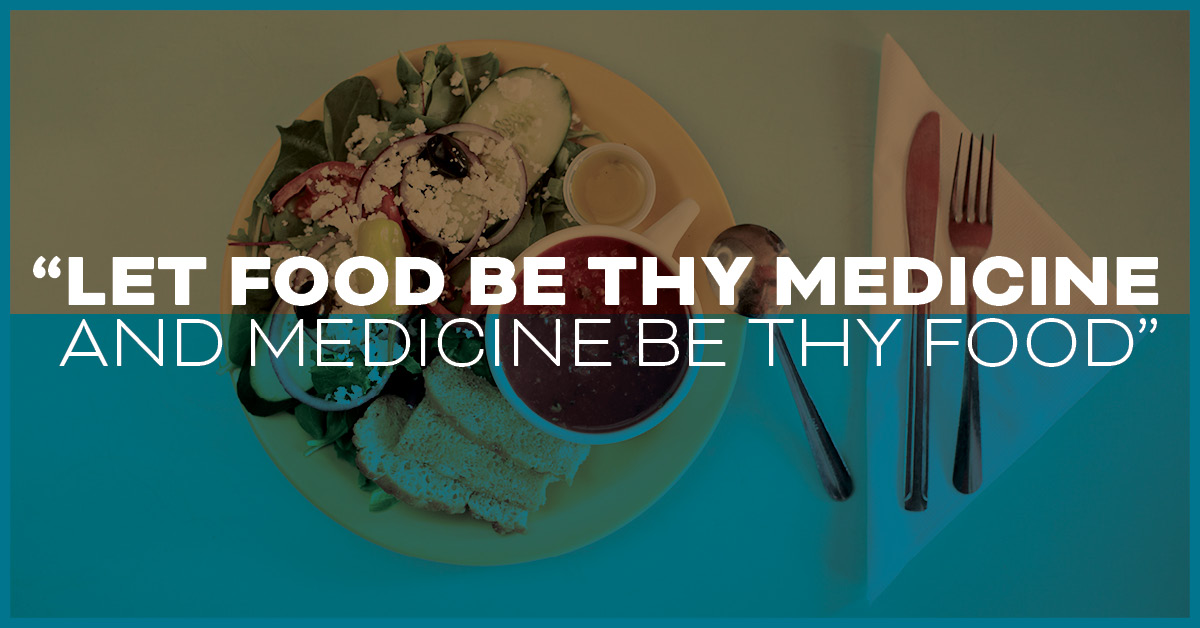
Hippocrates said, “Let food be thy medicine and medicine be thy food,” and that’s a prescription I consistently give to my patients at Evoke 5 Medical Center, my functional family medicine clinic in Oklahoma City. “Eat well, feel well (the top 200 foods to make you feel good)” is one of my trusted resources, and I’m pleased to share some highlights with you here.
Vegetables
If there’s one food group we can never eat too much of, it has to be vegetables. A good rule to live by is 7 to 9 servings of vegetables per day in a well-rounded diet. Abundant in vitamins, minerals, fiber and water, vegetables help to cleanse and alkalize the body, neutralizing acidity and reducing the toxic load.
Vegetables are also low in fat and calories (with the exception of starchy vegetables, such as potatoes, eddoes, winter squash and yams), and they are one of the best sources of phytochemicals – potent plant compounds that help to protect the body against disease.
Scientific research suggests that phytochemicals slow down the aging process and reduce the risk of disease and health concerns, including cancer, heart disease, high blood pressure, cataracts, osteoporosis and arthritis.
Most phytochemicals function as antioxidants, helping to counteract the hazardous effects of free radicals, which are unstable molecules that damage body cells. In fact, free radical damage is thought to be one of the main causes of aging. Phytochemicals offer other benefits, such as stimulating the immune system, regulating hormones, and providing antibacterial and antiviral activity.
The great news is that all vegetables are brimming with these natural plant components, of which hundreds have been identified. We are still learning more about food molecules and how this plays a role in our epigenetics every day.
Fruit
Generally, fruit contains more vitamins than vegetables, whereas vegetables rate higher in the mineral stakes. Most fruits are exceptional at cleansing and alkalizing, helping to eliminate toxins from the body. Fruits also help regulate the digestive system by stimulating movement of the digestive tract and improving the body’s ability to absorb nutrients. In addition, fruits are a fantastic source of enzymes, natural sugars and those self-protective phytochemicals we talked about earlier.
As the body digest fruits relatively quickly (within 30 minutes), they are best eaten on their own, separately from other foods that take longer to digest. This prevents fruit from fermenting in the digestive tract. Between meals is a good time to fit them in, unless you opt for an all-fruit breakfast.
There is a fine balance between a good amount of fruit daily and overdoing this type of food. High in fructose, fruit can lead to other health issues if over consumed. Balance is key.
Grains
Grains are the primary source of energy for many people throughout the world. Unrefined grains are rich in slow-releasing carbohydrates that help sustain and fuel the body. They are also rich in fiber to aid digestion.
There are two main types of fiber: soluble and insoluble. Soluble fiber helps to stabilize blood sugar levels and lower high cholesterol, while insoluble fiber regulates bowel movements. Grains contain both types.
Some grains, such as quinoa and amaranth, provide the body with complete protein; other grains need to be combined with beans, pulses or seeds to make their protein more usable in the body. This can easily be achieved and we often do it automatically when preparing meals in traditional combinations – for example, beans on toast, rice and dhal, rice with chili beans, and so on.
Like fruits and vegetables, grains contain many healing vitamins, minerals and phytochemicals. Most grains supply B vitamins, which are needed for normal metabolism and a healthy nervous system, along with calcium, magnesium and various trace elements.
Many people have intolerances to grains or allergies to gluten (a sticky protein found in wheat, rye, barley and oats). Typical intolerances can cause a lot of inflammation throughout the G.I. system and abnormal bacterial and yeast overgrowth. This makes it very important to balance the amount of grains and carbohydrates in a healthy diet.
Beans and pulses
Collectively known as legumes, beans and pulses (the edible seeds of certain legumes) are an excellent source of protein (especially when combined with grains), as well as soluble and insoluble fiber and complex carbohydrates. This makes them ideal energy foods for balanced blood sugar. Legumes also contain a broad spectrum of minerals and a brain nutrient called lecithin. Beans are also a very good source of protein as part of certain diets.
Nuts and seeds
Both these food groups provide protein, minerals and vitamin E, which are very important for the skin, reproductive organs and circulatory system. Nuts and seeds are also packed with the healthy fats associated with lowering high cholesterol, balancing hormones and reducing inflammation.
A good source of omega fatty acids, nuts and seeds can be an important staple in many diets such as the Paleo diet and ketogenic diet. They are also offer high fiber content and can help lower inflammation. Many nuts are also good sources of nutrients for the brain.
The high fat content of nuts and seeds means they are calorie laden, though, so eat them in moderation.
Herbs and spices
Besides adding taste and aroma, herbs and spices boost the nutrient content of all kinds of meals. Many herbs and spices have antibacterial and anti-yeast benefits in the G.I. system. This can help regulate any dysbiosis of the gut microbiome.
A good rule of thumb is that you cannot over-spice many meals, and only benefit from herbs and spices.
Find your optimal diet
At Evoke 5, we work with our patients to identify their unique nutritional needs and the optimal diet for their bodies, using a variety of techniques, including genetic testing. If you’d like to learn more, please contact us at Evoke 5.
